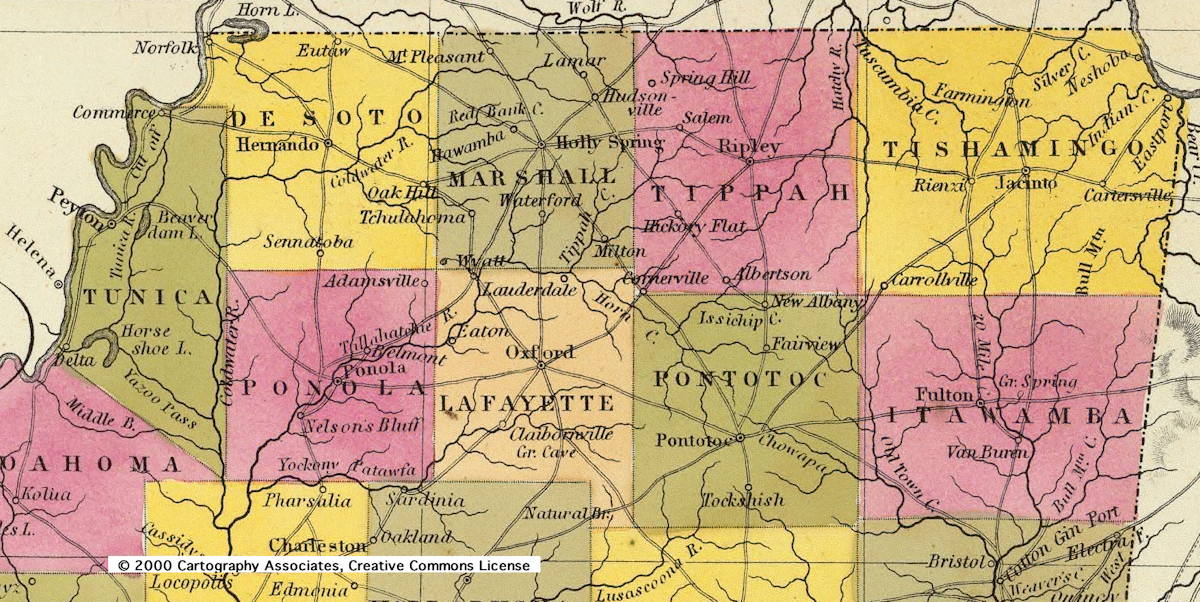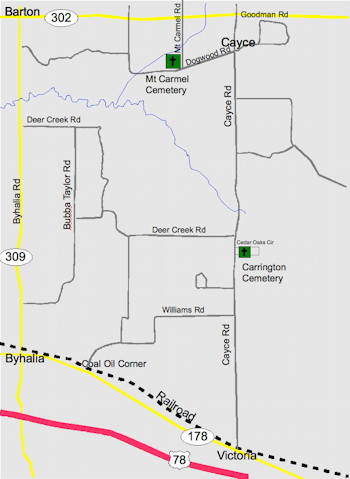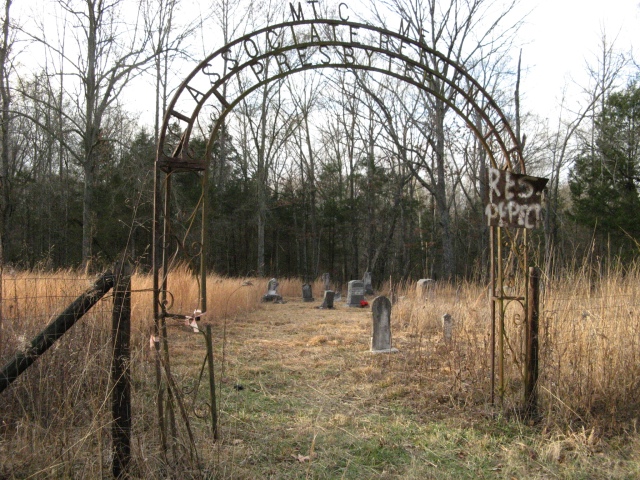Marshall County
The original inhabitants of northern Mississippi were the Chickasaw Indians. Although the Chickasaws had many conflicts with the early Spanish and French settlers, the English got along amicably with them. In the late 1820s pressure for the removal of the Chickasaws to a reservation west of the Mississippi increased and unscrupulous politicians who wished to make money out of the Indian lands used every means in their power to bring about the migration. The Chickasaws ceded their lands at the Treaty of Pon te tok in 1832.

Northern Mississippi, 1846
Marshall County was one of the original and the largest of the 16 counties formed in 1836 from Chickasaw lands, and received its full share of settlers during the early rush of emigration into the newly opened Chickasaw cession. By the year 1840 it had a population of about 17,500, and by 1850 the population was 29,089. Among these were many prominent families and wealthy planters. The county was named for John Marshall, Chief Justice of the US Supreme Court. Holly Springs is the Capital of Marshall County.
The following description of Marshall County is from the Goodspeed History of Mississippi1:
"Marshall county was established February 9, 1836, and was originally settled by a class of planters unusually intelligent, patriotic and public spirited, many of whom became prominent and well known. The merchants who founded Holly Springs were of the same class of large minded men. In antebellum times Marshall County was the empire county of Mississippi; its soil was very fertile, and its yield of cotton very large. Its topography is varied, being in the main slightly rolling, and well drained by many streams."
Cayce, originally known as Bainsville, was established before the Civil War and is located at Victoria and Collierville Roads, near Collierville. The land was originally owned by Mr. Bain. Cayce is about three miles from the Tennessee border and about 8 miles from Collierville, TN. It was first settled in about 1839. In the map in Figure 36 Cayce is not shown, but it is near the DeSoto County line, 6 miles due west of Mt. Pleasant, which is on the road that heads northwest from Holly Springs.
Mt. Carmel ARP church was still quite active at the turn of the 20th century, but has since been completely abandoned. It appears that the church building is no longer standing, and the cemetery is not maintained as can be clearly seen in photo below. The cemetery is only about 50 yards square, but contains a large number of graves, although many of the tombstones are broken or fallen down. Rev. James W. Baird, the son of Elizabeth Boyd and Cornelius Baird, was the pastor of the church in 1891 and 1892.
William and Mary Boyd are buried in the cemetery as well as many members of their family including children, grandchildren and their spouses. The cemetery is located on an unpaved road, Mt. Carmel Road, about 300 yards north of Dogwood Road. In 2009, a locked gate had been installed on Mt. Carmel Road at Dogwood Road preventing automobile access to the cemetery. However, there is space to park a car in front of the gate and it is only a short walk to the cemetery.


Mt. Carmel Cemetery (photo taken January 2008)

Carrington Family Cemetery, Cayce, MS 2009
_________________________
* These images are copyright © 2000 by Cartography Associates. Images may be reproduced or transmitted, but not for commercial use. For commercial use or commercial republication, contact mailto:carto@luna-img.com This work is licensed under a Creative Commons License. By downloading any of these images, you agree to the terms of that license.
Scotland | Ireland | South Carolina | Mississippi | Tennessee | Arkansas | Texas
